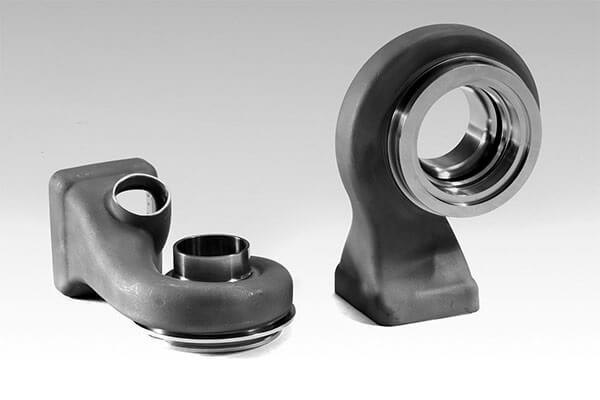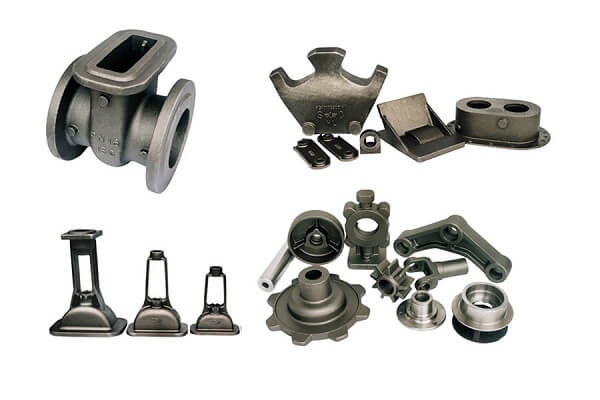White Paper: Investment Casting Institute

The Investment Casting Institute (ICI) is a manufacturer’s trade group founded in 1953 with the primary aim of promoting the investment casting process, collecting and disseminating industry information, and offering educational opportunities to its members.
Contents
What is investment casting?
One of the earliest metals forming technologies is investment casting. It was invented by either the Chinese or the Egyptians, who were working with beeswax to create artwork, sculptures, and other objects, then creating a ceramic shell over the wax, melting the wax out, and backfilling with whatever metal they were working with; for the Egyptians, this was often gold.
How did the Investment Casting Institute come about?
The Investment Casting Institute has been around for 65 years. It was formed by a group of entrepreneurs from throughout the country who worked in the business and sought innovative ways to use it. Everyone was working on their development at the time, and the industry believed that by collaborating, sharing ideas and projects, and working together, this fledgling business could be steered in a direction that would result in significant growth, which it did.
Since then, investment casting has flourished in the aerospace industry and power generation, automotive, and a wide range of industrial applications, including exploration and production, drilling, recreational vehicles, orthopedic implants, medical equipment, many other things.
Investment casting institute members
- The investment casting institute consists of the fooling
- Foundries
- The people who pour the metal
- Suppliers to the foundries
- The people who manufacture the metal, ceramics, refractories, and the equipment to support the process
Regular members, which are North American foundries, fall into four groups in investment institution casting. Affiliate members include direct material suppliers, equipment providers, and consultants from across North America. Non-North American foundries are Associate Regular members. There are also Associate Affiliates, which are providers from outside of North America.
The investment casting institute now has over 275 member firms around the world. Individual memberships do not exist; all individual members are either honorary or alumni members. People who have worked in the sector and desire to stay connected are called alumni members. They pay a small fee to receive magazine and membership discounts if they attend one of the Institute’s activities.
Honorary members are retirees who may contribute significantly to the industry; they have the same rights as graduates but do not have to pay for them. In their retirement, these individuals serve on committees and help move things forward.
Investment Casting institute tolerance
The as-cast tolerances of the investment casting technique are excellent and repeatable. When a single point is consistently measured, it has a cast capability of +/- three standard deviations—typically +/-.003 to +/-.004 per inch. Because component layout significantly impacts tolerance capability, this can vary based on your part design. In contrast to non-uniform and non-symmetrical wall sections, symmetrical shapes with uniform wall sections solidify with substantially less fluctuation.
Linear Tolerances
The variance intolerance is caused by a mixture of part configuration effects that cause non-uniform shrinkage and all other process variations in creating a wax pattern, ceramic mold, and casting.
Premium Linear Tolerances
Premium tolerance capacity is possible, but it must be considered part by component, dimension by dimension. Although +/-.002″ per inch is a more common premium cast tolerance, Significant can hold +/-.002″ in specific features. It’s critical to set tight tolerances just where they’re required for part function and leave the rest to standard linear tolerances.
General Linear Tolerances
The most cost-effective way to produce these measurements is to use a greater general linear tolerance. Another effective technique is to include these elements in a 3D CAD file but not measure them for regulatory reasons. The feature is then tooled according to the design, but only for significant features to the customer is valuable inspection and assessment time spent.
Investment casting institute handbook
The Investment Casting Institute has a comprehensive library of reference and teaching materials intended exclusively for investment foundries’ specialized needs. Investment Casting Handbook, a must-have for both process and product engineers, and the Atlas of Defects, which offers vital information for investment foundries to reduce scrap and rework, are two of the most extensively used publications.
Other subjects covered include statistical process control, part finishing, avoiding shell cracks, and handbooks or martial tests. For members, all publications are accessible at a discounted rate.
Is the Investment Casting Institute focused on advocacy?
Advocacy is not a priority for the investment casting institute. It makes an effort to be apolitical. It does, however, have a government affairs committee and collaborates with another lobbying trade organization. The investment casting institute does not promote candidates or positions. However, it makes every effort to keep its members informed about critical business issues.
If an issue of importance arises, the institution may write an article about it, host a webinar on it, or otherwise disseminate the information. Although the investment casting Institute does not lobby, it believes it has a responsibility to keep its members informed and assist them in having their voices heard.
Conclusion
Investment casting institute is a member-run trade association in tune with the industry, its current and future trends. The Institute works with OEMs, the people who buy the castings, forgings, fabrications, and the manufacturers in the industry.
The investment casting Institute is the industry’s voice; however, it’s not an advocacy group; government agencies often contact the Institute to advise them on institute positions on things. The primary goal of the investment casting institute is to educate, grow, and offer a clear route for the sector to progress and prosper.
The Institute brings people together, and its members aid one another. Suppose you ask any active member of the Investment Casting Institute what the most valuable benefit is. In that case, they will tell you it is the networking opportunities, the individuals they meet at trade fairs, and the opportunities for joint events and activities. The Institute has done collaborative work with other trade organizations as well as universities.
The investment casting institute tries to stay in touch with industry needs and implement methods and programs to meet or exceed those goals and assist people in solving challenges they’ve encountered in the past, dealing with present issues, and stepping confidently into the future.


